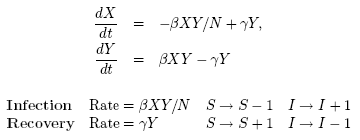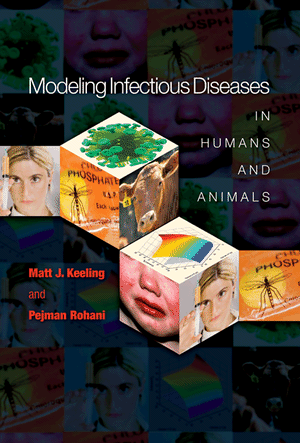|
An alternative forumulation which
allows noise to be incorported into epidemiological models is to use
event-driven or demographic stochasticity. Demographic stochasticity is
defined as fluctuations in population processes that arise from the
random nature of events at the level of the individual. Therefore, even
though the baseline probability associated with each event is fixed,
individuals experience differing fates due to chance. Additionally, in
contrast to the previous methods, the number of infectious,
susceptible, and recovered individuals is now required to be an
integer—we deal with whole numbers of people, animals, or other
organisms. Events occur sequentially and at random, but with rates
specified by the underlying equations; each event then causes an
integer change to the population variables and the process is repeated.
For simplicity we first look at the SIS model where only two processes
(infection and recovery) are possible:

Note that we are using numbers
(X,Y,Z) throughout this chapter for greater clarity.
| β |
is the transmission
rate and incorporates the encounter rate between susceptible and
infectious individuals together with the probability of transmission. |
| γ |
is
called the removal
or recovery rate, though often we are more interested in its reciprocal
(1/γ) which determines the average infectious period. |
| Y(0) |
is
the initial number of infectious individuals. |
N
|
is
the population
size -- assumed to be constant.
|
All rates are
specified
in days.
Requirements.
All parameters must be positive. Remember, Y and N both refer to numbers.
Files
Python Program, MATLAB Code.
|


